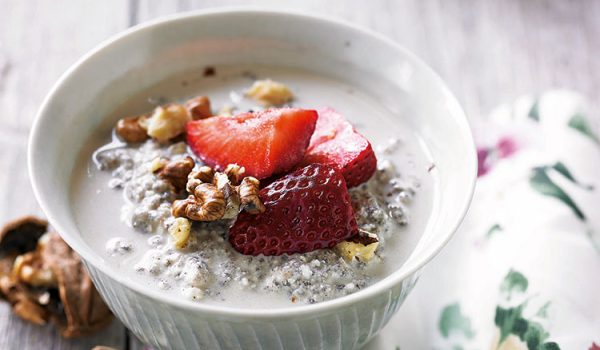Niji features contemporary Japanese menu infused with traditional Japanese Izakaya dishes with Western ingredients and modern taste. Niji is named after the diverse colour and taste associated with food and beverages.
The Perfect Japanese Rice
Using the right rice is highly important, and short grain rice is preferred. The special rice you need for sushi is called ‘Calrose Rice’ (Kapika in Japanese).
INGREDIENTS & UTENSILS
5 cups ( 480g) short grain rice
3 cups ( 720ml ) water
1 25 ml rice vinegar added with 2 table spoons of sugar and 2 teaspoons of salt
A “Hangiri ” if you have one, it is a cypress wood barrel / tub used in sushi rice preparation process. A large wooden Spoon or spatula
METHOD
1 Gently mix the rice with plenty of water and then drain immediately.
2 Repeat this process 3 to 4 times until the water becomes almost clear, then drain. Place the rice gently in a pot.
3 Add 3 cups ( 720ml ) of water and leave to soak for 30- 60 minutes.
4 Cook the rice on medium to low heat for 10 minutes until it boils, then reduce to a very low heat for another 15 minutes. Cover the pot with a lid, and allow to steam for 15-20 mintues.
5 Remove the lid quickly and turn in your hand at the same time to prevent any condensed steam falling from the lid and back into the rice which will ruin the texture.
6 Wet a large wooden spoon/spatula and gently mix the rice, using a folding action to make the rice fluffy. Note – a metal spoon will damage the rice and can also react to the vinegar which is added later.
7 Mix the rice vinegar, sugar and salt into a small pan on a medium heat until all granules have dissolved into the mixture. Pour mixture on the rice and stir well.
8 Allow the rice to cool to room temperature. It is now ready for you to create sushi! Note – putting the rice into the fridge will damage the rice
Inside-out roll 裏巻裏巻 (Uramaki)
Note – nori means sheet of seaweed
METHOD
1 Wrap the rolling mat with 2-3 full rounds of cling film to prevent the rice sticking to the mat. Squeeze out the air locked inside or poke small holes in with a toothpick to ensure all air is removed from the clingfilm.
2 Place a small sheet of nori (seaweed) on the bamboo mat, with the shiny side facing down.
3 Lightly wet your finger and start gently spreading a 1cm layer of rice across the nori from left to right.
4 Flip the nori over so the rice is on the mat, with the bottom edge of the nori right on the bottom edge of the mat.
5 Add ingredients of your choice, avocado and crab meat is a great combination, and place them 2-3cm in from the edge of the nori.
6 Using the mat, fold the bottom edge of the nori so it covers the top edge of the filling and squeeze firmly together.
7 Pull the mat back slightly and gently roll the sushi roll so that the rest of the nori is now part of the roll.
8 Continue to use the bamboo mat to firmly compact the sushi roll.
9 Cut into pieces of 6/8 and serve on a rectangular dish with wasabi, ginger and soy sauce as traditional accompaniments.
Different Types of sushi at Niji that you can also create:
Nigirizushi: When we talk about sushi, we are mostly referring to this form, the “hand pressed sushi”.
METHOD
1 Press a small amount of the prepared sushi rice into a small rectangular box between the palms of your hands, then drape a topping of your choice ( ネタneta) over the top. Thinly sliced salmon and wasabi is perfect for this.
Gunkanmaki: Soft, loose or finely-chopped ingredients are served in this form because it requires the confinement of nori.
METHOD
1 Wrap the nori around a small oval shaped lump of sushi rice, ensuring the top half of the nori is sticking up away from the rice. Place your ingredients, such as finely chopped seaweed, into the nori on top of the rice.
Hosomaki: a cylindrical piece with nori on the outside. A typical mini roll has a diameter of about 2.5cm and contains only one filling.
METHOD
1 Using the same method as the inside-out roll, just don’t flip the nori over. Keep the rice on the inside as part of the filling and leave the top 2cm of the nori free from rice before rolling.
Temaki: Large cone- shaped piece of nori wrapping the ingredients in a cylindrical fashion, so the shape is that of a cone, with the ingredients traditional spilling out slightly at the top (wide end).
The Carousel thanks Niji Restaurant for this recipe.








